For its more than a thousand years of history, Marrakech managed to visit the status of the capital of Morocco, to survive the heyday, oblivion and once again become one of the main cities of the country. Power changed frequently here, and each new dynasty brought its own vision to architecture. However, a number of objects, such as the Medina or the Koutoubia Mosque, managed to survive to this day.
In the last century, Marrakech began to attract Europeans. They were amazed by the local culture and measured way of life, and the guests did not remain indebted to the city. The artist Jacques Majorelle created an amazingly beautiful garden, and the Dutch anthropologist Bert Flint presented the Tiskiwin Museum, a collection of rarities from all over North Africa, to the Moroccans. Even the famous fashion designer Yves Saint Laurent was honored with a museum for his contribution to the development of Marrakech.
What to see and where to go in Marrakech?
The most interesting and beautiful places for walking. Photos and a short description.
- Medina
- Jamaa El Fna Square
- Majorelle Garden
- Menara Gardens
- Bahia Palace
- Qasr al Badi
- Mosque Koutoubia
- Tomb of the Saadites
- Ben Yousef Madrasah
- Markets of Marrakech
- Museum of Marrakech
- Yves Saint Laurent Museum
- House of photography
- Dar Si Said Museum
- Tiskiwin Museum
- Jewish cemetery Miara
- Marrakech Station
- Arsat-Moulay-Abdeslam Cyberpark
- Oasiria Water Park
- Waterfall Ouzoud
Medina
Old part of Marrakech. Because of the color of the walls, it is called the "red city". Their height is about 10 meters, and their length is about 16 km. The total number of towers is more than 200. The streets are narrow, houses and other buildings are traditional for this area. Within the medina, there is Jamaa el-Fna Square, the busiest part of the former Moroccan capital. Included in the list of UNESCO World Heritage Sites.

Jamaa El Fna Square
Main square of the city. She has many purposes. First of all, it is a huge “souk” - this is the Arabic name for the market. They sell everything on the square: from spices to antiques. Circus performances are also held here and animals are put on display. There is a stage and opportunities for mass events of any kind. Locals say: if you spend one day on Jamaa el Fna, you can learn everything about Marrakech.
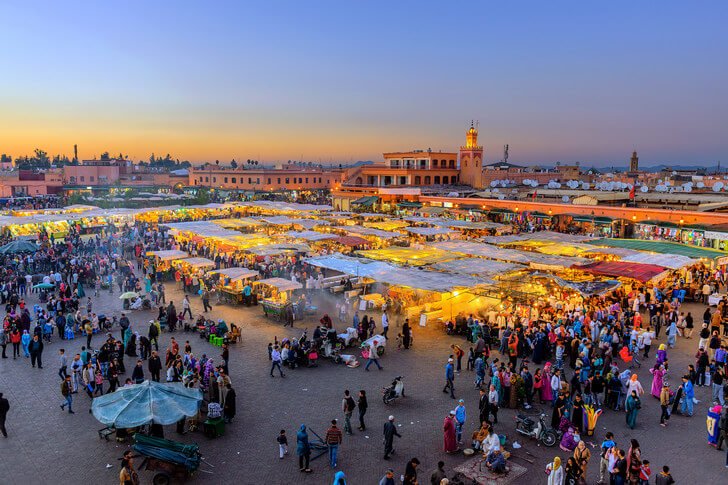
Majorelle Garden
A picturesque park surrounds the house of the artist Jacques Majorelle. The master settled in Marrakesh in 1919. He was diagnosed with tuberculosis, and the local climate was suitable for treatment. In his spare time, Majorelle began to create a garden. The hobby has turned into a real passion. The artist communicated with botanists from different countries and bought exotic plants from all over the world. Even during his lifetime, the owner began to let tourists come here.
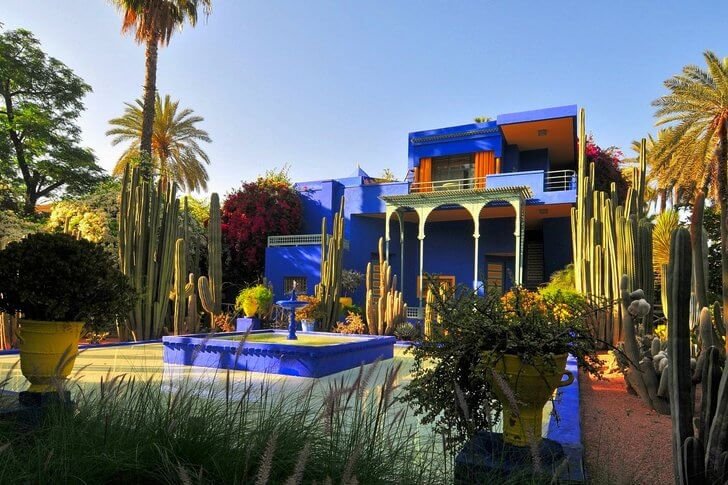
Menara Gardens
They have existed since the 13th century. Later, an artificial lake was dug in the center. The pavilion was built in 1870. Initially, this place was a small farm. The number of olive trees exceeds 30,000. The fish were released into the lake. Some species jump over the water, which complements the already picturesque landscape. Picnics are allowed in the area. In the evening - the best time for photo shoots.
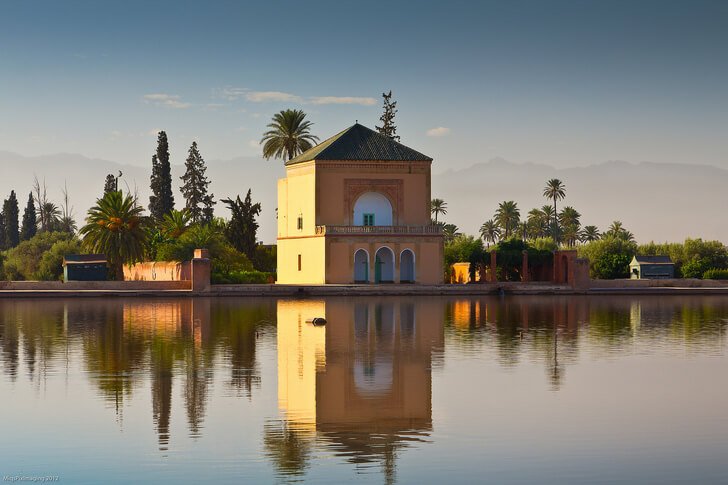
Bahia Palace
It was built from the middle of the century before last for many years. Vizier Sidi Moussa commissioned a project for one of his wives. He periodically bought land around, so the architect had to make changes to the plan. The palace has only one floor. The reason is the extra weight of Moussa, who did not want to climb stairs. Tourists are attracted to this labyrinth building because of its unusual appearance and interior design.
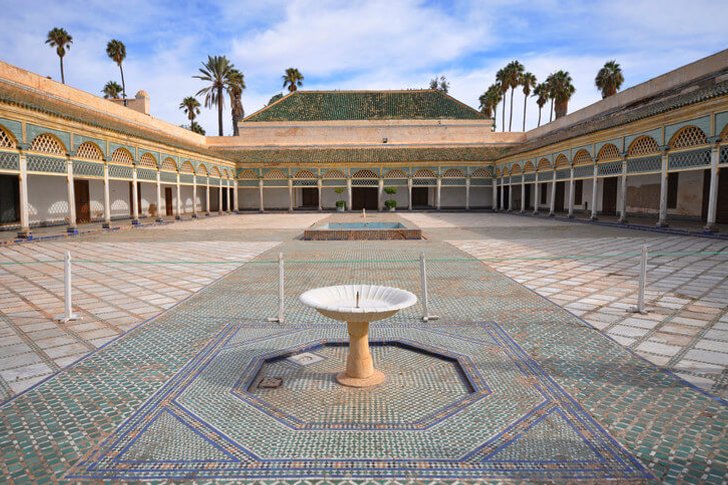
Qasr al Badi
Construction was carried out during the life of Ahmad al-Mansur. He allocated large funds for the construction of the palace, so the best materials and expensive decorations were used. Supposedly, there were about 360 rooms inside. Moulay Ismail ordered the destruction of Qasr al-Badi when Marrakesh was no longer the capital. Demolition took a total of 10 years. Only the orange garden and fragments of the walls have survived.
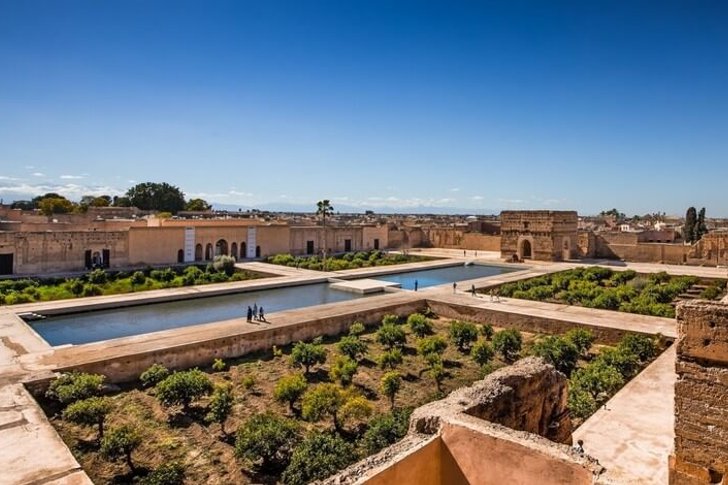
Mosque Koutoubia
The largest mosque in the city. Built in the 12th century. Known primarily for its minaret, which rises to 69 meters. Subsequently, he served as a prototype for a number of buildings, including the Rabat tower of Hassan. The minaret is illuminated at night. The name translates as "mosque of booksellers". In the past, books were sold on the site in front of the entrance, and a religious library was located nearby.
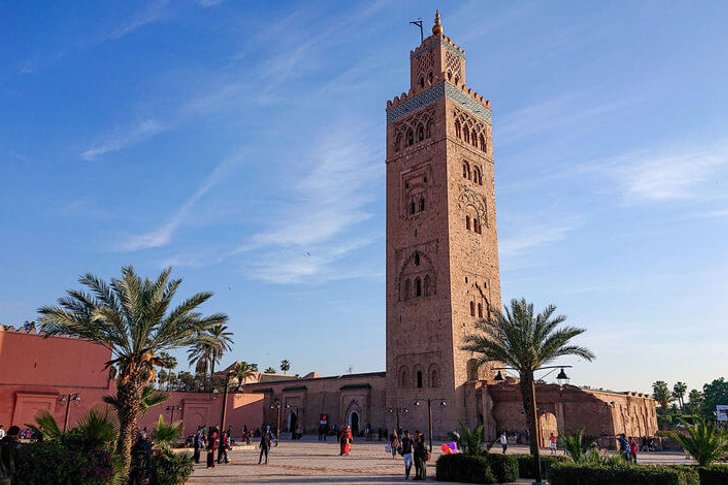
Tomb of the Saadites
Sultan Ahmed al-Mansur created this tomb primarily for himself. He was buried here in 1603. Around the graves of his associates, wives, and later other representatives of the royal house are located. When the power changed, the Alaouites did not dare to destroy the cemetery, but surrounded it with a wall. Nothing was known about the tomb until 1917. Then it was discovered by a French expedition.

Ben Yousef Madrasah
An Islamic educational institution was built in the 14th century. It not only retained its external appearance, but the religious life of the city is still being built around it. The madrasah got its name from the neighboring mosque. The complex covers an area of 1.7 thousand m². There is a large pool for ablutions in the yard. Through it the road leads to the main prayer hall. Paths and floors are covered with marble or mosaics.

Markets of Marrakech
Markets for Morocco are part of the national culture. Marrakesh has been famous for them since ancient times. There are highly specialized, for example, grocery, but most are universal. So Bab Dukkala street is filled with the smells of spices and shops with products of local craftsmen. The largest souk is Djemaa el Fna Square. It is divided into several parts, where they sell carpets, grandmothers, antiques.
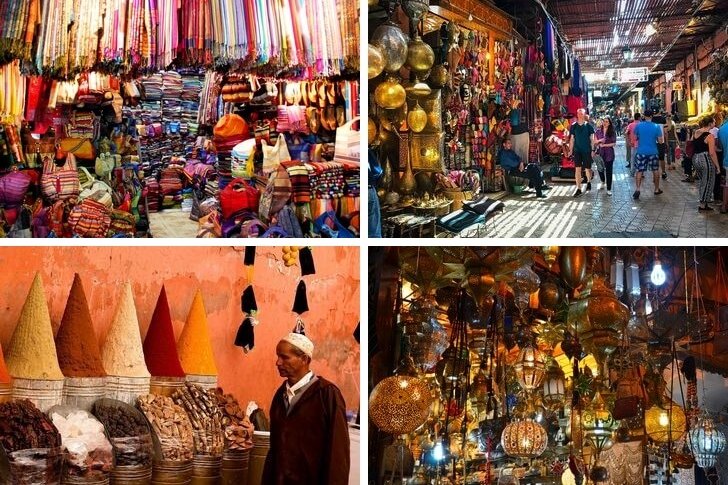
Museum of Marrakech
Occupies the palace of Dar-Menebhi. The collection is dedicated to the culture and history of the city, as well as all of Morocco and neighboring regions. Ancient books, relics, religious objects, ceramics, jewelry are the basis of the collection. Unique exhibits include a 12th-century Koran and a Sufi prayer book. In recent years, the exposition has been supplemented with modern products of local craftsmen. Temporary exhibitions of artists, photographers and sculptors are held.
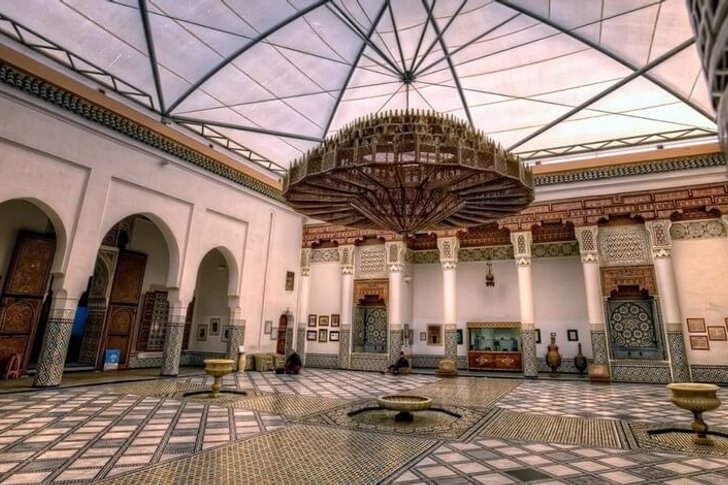
Yves Saint Laurent Museum
Opened in 2018. A special building was built for the museum. French architects drew on the archives of the fashion designer and tried to combine straight and curved lines when designing. Yves Saint Laurent first visited Marrakesh in 1966. He is involved in saving the Majorelle Garden. The exposition is dedicated to the fashion designer, but there are also temporary exhibitions. The cafe next to the design resembles the workshop of Saint Laurent.
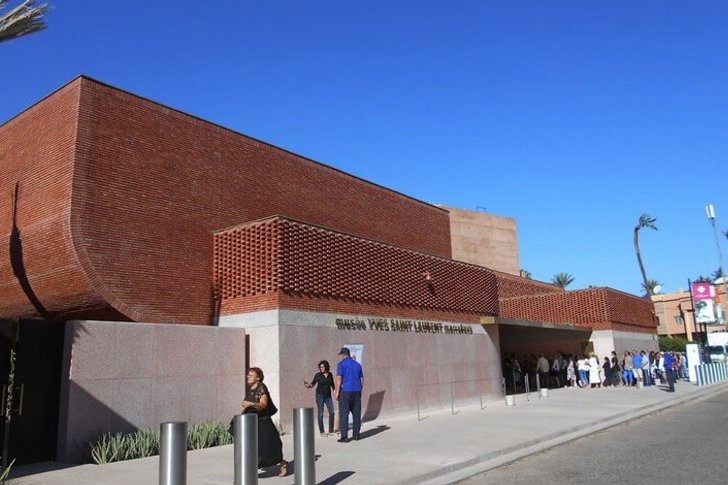
house of photography
Opened in the old part of the city in 2009. The exposition is made up of photographs covering the period from the 1870s to the 1950s. The building where the collection is located was in the past a hotel for merchants and travelers. It was restored and placed here more than 4500 photos. They depict the history of Morocco. Photographers tried to capture both traditional country nuances and unusual things.

Dar Si Said Museum
Opened to visitors in 1934. It was originally built as the residence of the brother of the vizier Ba Ahmed. The walls of the palace are thick and high, which is typical for local architecture. It is surrounded by an Andalusian garden and has a fountain in its center. The museum's collection is the cultural wealth of Morocco: pottery, antique clothing, Berber jewelry, fixtures from the past, furniture made from precious woods.

Tiskiwin Museum
It occupies an old building located between the palaces of Dar Si Said and Bahia. The exposition was collected by an anthropologist from Holland, Bert Flint. He settled in Marrakesh in 1957 and began to systematize the artifacts collected throughout the region. Exhibits - handmade carpets, jewelry, Berber clothing, art. They tell the story of the city, but at the same time of the whole of North Africa.
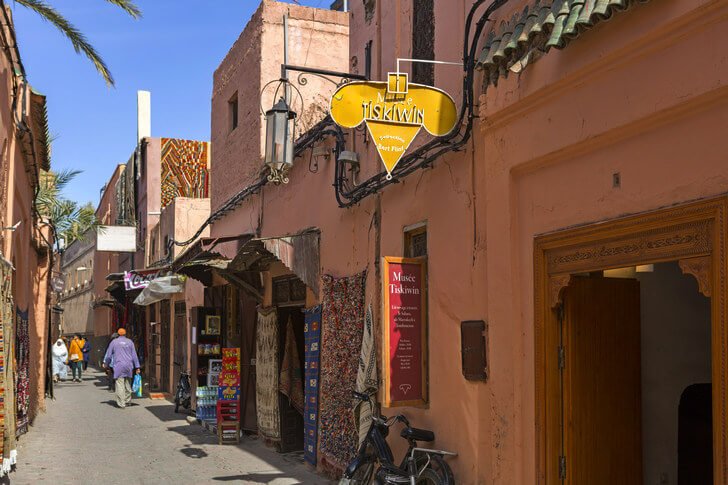
Jewish cemetery Miara
Dated to the 17th century. Refers to the Jewish quarter. The streets are narrow and the buildings are close to each other. The cemetery itself is far from the tourist routes. It is easy to miss it: a high wall separates the territory from the road. Caretakers let those who are interested into the cemetery without any problems, however, you must follow some rules of conduct when examining old tombstones.
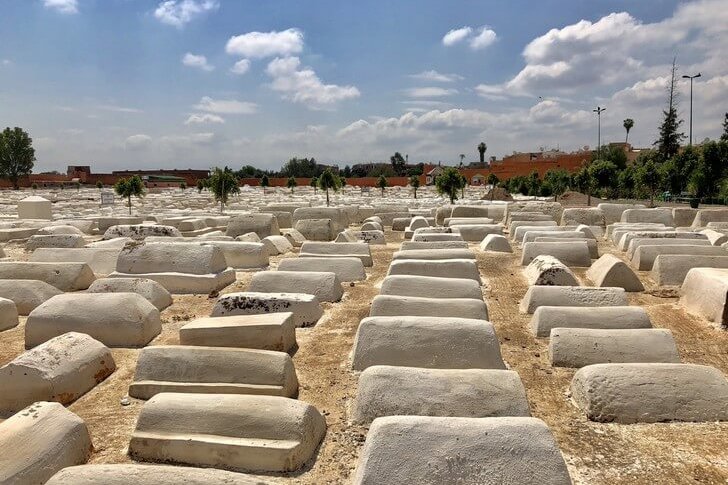
Marrakech Station
The first railway station was built on this site in 1923. In 2008, a new building was opened nearby, just opposite the Royal Palace. The architectural plan of the station took into account national traditions, the design is replete with details. On the territory there are not only recreation areas, but also cafes with shops. At the moment, this station is the southern terminus in the railway network of the whole country.

Arsat-Moulay-Abdeslam Cyberpark
One of the oldest parks in the city was laid out in the 18th century. Already in our time, they decided to remake it and add more technical innovations. Multimedia terminals were placed throughout the territory. Wi-Fi covers the entire park. If you wish, you can use a specially designed virtual guide to the park. In addition, there is a function of remote sightseeing of the city.

Oasiria Water Park
Extensive entertainment area for the whole family. The water park invites guests to visit restaurants for every taste or do fitness. 8 swimming pools are available to visitors all year round. Some have rides. About 10 hectares of gardens have been planted for nature lovers. They contain exotic plants. There are special night shows. On major holidays, theatrical performances are arranged.
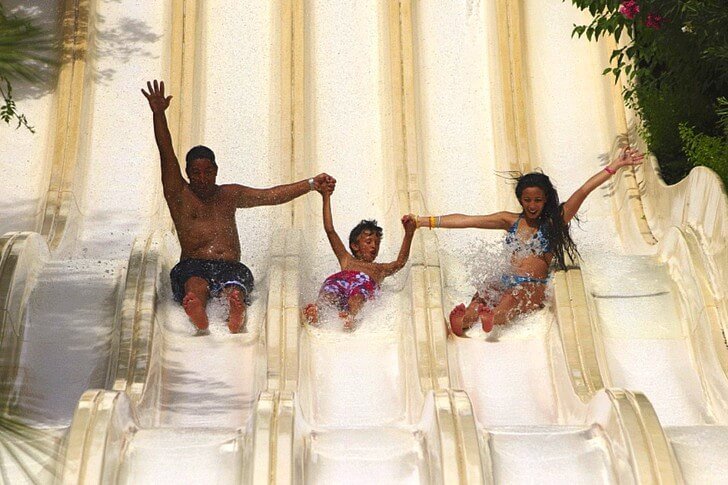
Waterfall Ouzoud
It is located about 150 km from the city in the High Atlas mountains. The translation of the name is "olive trees". This type of vegetation covers the slopes. Height - 110 meters. The waterfall has three cascades. You can come close to it, and the location feature allows you to look down on the falling water. At sunset, monkeys, already accustomed to the dominance of tourists, go to the Ozudu to drink.
